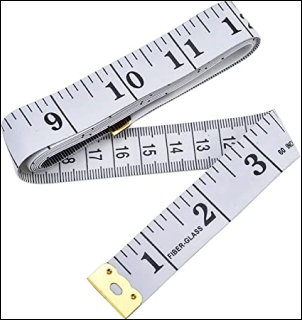Maintaining Your Suits: A Complete Care Guide

Key Takeaways:
- Dry Clean Sparingly: Spot clean and brush regularly to maintain your suit’s structure and color without weakening the fabric.
- Use The Right Tools: Use wide, wooden hangers and breathable coversto preserve your suit’s shape and prevent moisture damage.
-
Keep The Fabric Crisp With Steam: Steam, don’t iron when removing wrinkles to protect delicate materials and keep the fabric looking crisp.
You shouldn’t have to baby your suit, but you shouldn’t toss it on a chair and hope for the best. Whether you wear yours once a week or almost daily, how you take care of it matters. A well-made suit, especially one tailored to your frame, is built to last—but only if you give it the attention it deserves.
At Sartoro, we design suits with performance and longevity in mind—premium materials, comfortable stretch, and a custom fit that moves with you. But even the best suit needs a little upkeep to stay sharp.
In this guide, we’ll break down the essentials of suit care: when to clean, how to store, what to avoid, and how to make sure your suit looks good every time you wear it.
Why Proper Suit Care Matters More Than You Think
When you invest in a high-quality suit, you're not simply purchasing a piece of clothing—you're acquiring a long-term wardrobe staple that can reflect your personality and attention to detail. Proper suit care is essential in preserving your garment's integrity and visual appeal, so understanding the intricacies of maintenance can be vastly rewarding. Below, we delve into the pivotal reasons that suit care demands more attention than you might initially think.
Prolong The Lifespan Of Your Suit
A meticulously tailored suit is crafted with the expectation of longevity, but this lifespan can be drastically reduced without proper care. Regular cleaning and mindful storage can keep a suit looking fresh and sophisticated for years.
Exposure to harsh elements like pollution and sweat, especially if not addressed promptly, can lead to fabric degradation and color loss. Mastering suit care means embracing small habits that significantly extend the suit's life, ensuring your wardrobe continues to serve you year after year.
Maintain Fabric Quality And Aesthetic
Every suit is a masterpiece composed of intricate fabrics that demand careful attention. If mistreated, fine materials like wool, cotton, and linen can become misshapen or lose their charm. Investing time in understanding how each fabric reacts to different cleaning agents or storage conditions helps to maintain the original sheen and texture. An immaculate suit, free from unwanted creases and blemishes, projects an image of professionalism and sophistication.
Cost Efficiency In The Long Run
It’s easy to overlook that the financial effort of buying a premium suit is an investment intended to provide durability and aesthetic satisfaction returns. However, repairs or replacements due to neglect can be expensive. By prioritizing care, you significantly lower the chances of acquiring costly refurbishments or, worse, having to repurchase a new suit. Prudent treatment saves money and upholds the integrity of your wardrobe.
How Often Should You Dry Clean A Suit?
Caring for your suit properly involves balancing both maintenance and longevity. One of the most common questions suit owners ask is, "How often should I dry clean my suit?" While the answer depends on various factors, a general guideline is to limit dry cleaning to once or twice a year. This frequency helps preserve the fabric quality and construction of the garment.
Assessing Wear Frequency
First, consider how often you wear the suit. Dry cleaning once a year may suffice for those worn only on special occasions. However, more frequent cleaning might be necessary if it's part of your weekly rotation for business or social events. Remember, over-cleaning can weaken the fibers and diminish the vibrancy of your suit.
Evaluating Environmental Exposure
Attention to where and how long you wear your suit can provide insight. Exposure to urban pollutants, smoke, or food odors can necessitate more regular cleaning. On the other hand, suits worn in less demanding environments may require fewer cleanings. Always air out your suit after each wearing to freshen it naturally.
Spot Cleaning And Brushing
Consider spot cleaning and brushing as part of your routine care for intermediate cleaning needs. A soft brush helps remove dirt particles and refreshes the fabric, extending the intervals between professional cleanings. A gentle spot cleaning for minor spills or stains can also maintain your suit's appearance without a full dry clean.
The Best Way To Store A Suit: Hangers, Covers, And Climate
Proper storage is paramount when it comes to maintaining the integrity of your suit. Correctly storing your suit preserves its shape and quality and extends its longevity. Let's delve into hangers, covers, and climate essentials to ensure your suit remains pristine.
Choosing The Right Hangers
Selecting the right hanger is the first and most crucial step in suit storage. Opt for wide, contoured wood hangers that mimic the shape of the human shoulder. These support the suit jacket adequately, maintaining its natural drape and preventing unsightly creases. Avoid wire hangers at all costs, as they can distort the jacket's form, leading to misalignment and wrinkles.
Suit Covers: A Protective Layer
Suit covers protect your attire from dust, moths, and accidental spills. Invest in a breathable garment bag that ensures air circulation while still offering protection. Polyethylene bags, often used by dry cleaners, are temporary solutions — for long-term storage, opt for cotton or canvas covers. Avoid plastic covers, which can trap moisture, causing mildew and unpleasant odors.
The Perfect Climate
The environment where your suit is stored is as important as how it's stored. Keep your suits in a cool, dry place to prevent heat damage or mold formation. Aim for a climate-controlled setting where temperature fluctuations are minimal. Additionally, avoid proximity to direct sunlight, which can fade fabrics and weaken fibers over time.
Addressing Common Suit Care Issues: Wrinkles, Stains, And More
Caring for a custom suit demands attention to detail and dedication, ensuring every piece retains its luxurious feel and sharp appearance. There are a few prevalent issues that suit owners often encounter. The good news is that with expert guidance, these challenges can be managed with finesse.
Wrinkles: Ensuring A Smooth Appearance
Wrinkles are inevitable in even the finest fabric, neglected under layers of travel or long days at the office. To mitigate wrinkles, a gentle hand-steamer can be your best friend, effectively easing out creases without damaging the fibers.
For those who prefer a more traditional approach, a carefully adjusted iron on a low setting with a damp cloth can also work wonders, maintaining the suit's integrity while smoothing out stubborn lines.
Stains: Handling Unwanted Marks
Stains on a suit can be a source of immense frustration, but they don't have to spell disaster. Immediate action is paramount when confronting a stain. Blot—never rub—the affected area with a clean, dry cloth to absorb as much as possible.
A mild detergent solution or a professional stain remover, specifically designed for delicate fabrics, is advisable for more stubborn stains. However, when in doubt, seek the expertise of a professional cleaner to avoid any fabric damage.
Odor Control: Keeping Your Suit Fresh
Finally, though left unseen, odors can detract from the confidence a well-tailored suit imparts. If a suit ever absorbs an odor, a simple airing out on a suitable hanger in a well-ventilated space can often do the trick, alleviating accumulated scents.
Consider incorporating a fabric freshener spray designed for delicate materials or professional treatment for more persistent odors. This attention to detail guarantees that every time you don your suit, it feels as fresh as the day you first wore it.
How To Spot Clean Your Suit Without Ruining The Fabric
Spot cleaning a suit might seem daunting, but with careful handling and attention to detail, it can be a fairly straightforward process. Remember, your suit is a prized possession—caring for it properly will ensure it remains pristine for any occasion. Below, we guide you through the best practices for spot cleaning, ensuring you address stains while preserving the integrity of the fabric.
Identify The Stain
The first step in spot cleaning is identifying the type of stain. Different substances require different approaches:
- Oil-based stains such as grease or sauce will benefit from a different treatment than water-based stains like coffee or juice.
- Protein stains from body oils or sweat should be handled distinctively as well.
By diagnosing the stain type, you set the foundation for effective cleaning.
Gather The Right Tools
Before you begin, assemble the necessary tools to ensure efficiency and avoid fabric damage:
- A clean white cloth or microfiber towel
- Cold water
- Gentle fabric-specific detergent
- A soft-bristled brush
- Petroleum ether or a similar gentle solvent for tougher stains
Preparing these items allows you to act promptly, increasing the chances of successful stain removal.
Blot, Don’t Rub
When addressing a stain, remember to blot rather than rub. Rubbing can fray the fibers and set the stain, making removing it more difficult. Gently dab the area with your clean, white cloth, absorbing as much of the stain as possible before proceeding to deeper cleaning methods.
Use A Gentle Cleaner
Mix a small amount of gentle detergent with cold water to form a mild solution. Always test this mixture on an inconspicuous area of the suit to check for colorfastness:
- Use the soft-bristled brush to apply the solution delicately to the stained area.
- Work the solution into the fibers with light, circular motions, being cautious not to over-saturate the fabric.
Rinse And Dry
Once the stain is lifted, dampen another clean cloth with cold water and blot the area to remove any detergent residue. Afterwards, gently pat the area dry with a towel and hang the suit in a well-ventilated area if possible. Allow it to dry completely before considering wearing it again.
Essential Tools And Products For Effective Suit Care
Maintaining the pristine condition of your suit not only enhances your appearance but also extends the lifespan of your garments. Ensuring you have the right tools is crucial for effective suit care. Below, we delve into the essentials that should be in every discerning man's wardrobe arsenal.
Hanger Guide: A Foundation Of Form
A high-quality wooden hanger serves as the backbone of suit maintenance. Select wide-shouldered hangers, which support the natural drape of the jacket and help maintain its shape. Cedar hangers are particularly recommended, as they absorb excess moisture and offer a natural deterrent to moths, safeguarding the fabric.
Navigating The Fabric Brush
A fabric brush is an indispensable tool for removing dust, lint, and debris that inevitably accumulate on suits. Opt for a brush made with natural bristles, which effectively lift particles from the fabric without damaging the delicate fibers. Regular brushing prevents particles from embedding into the material and keeps your suit looking fresh and immaculate.
Steaming Vs. Ironing: A Greater Debate
Regarding wrinkle management, steaming is often preferred over ironing for suit fabrics. Steaming rejuvenates the fibers, smoothing out creases without direct contact that may shine the fabric. Invest in a vertical steamer, perfect for at-home or travel use, ensuring your suit always maintains its sophisticated silhouette.
The Role Of Suit Covers
A breathable fabric suit cover is a must to shield your attire from dust and environmental pollutants. Unlike plastic counterparts, which trap moisture and can lead to mildew, fabric covers allow air circulation. This prevents odors from settling in, keeping your suit as fresh as its first wear.
Utilizing these tools in your regular suit care routine will uphold the elegance and endurance of your apparel, ensuring you remain impeccably dressed on every occasion.
Final Thoughts
A great suit is more than just fabric and thread—it’s a personal investment in your style, confidence, and longevity. But even the best-made suit needs proper care to stand the test of time. From choosing the right hanger to mastering the art of spot cleaning, taking the time to maintain your suit ensures it always looks sharp, feels fresh, and performs like new. At Sartoro, we build suits designed to go the distance—but how far they go is up to you. With this care guide in your back pocket, you’re on your way to keeping your suit game strong.
Read also:
- Suit Cleaning: How To Wash & Maintain Your Suit Properly
- How To Pack A Suit: Tips For Wrinkle-Free Travel
- Suit Fabrics: The Ultimate Guide To Staying Comfortable In Any Weather
Frequently Asked Questions About Maintaining Your Suits: A Complete Care Guide
Can I machine wash a suit?
Machine washing a suit is not recommended. The agitation and heat of a washing machine can easily damage the delicate fabrics used in suit construction. Instead, consider professional dry cleaning to maintain the integrity and appearance of your suit.
What should I do if my suit gets wet?
If your suit becomes wet, gently pat it dry with a clean, absorbent towel. Do not wring or twist the fabric. Hang the suit in a well-ventilated area to air dry, protecting it from direct sunlight or heat sources to prevent shrinking or color fading.
How can I maintain the color of my suit?
Store the vibrancy of your suit's color in a cool, dry place away from direct sunlight. Opt for a breathable garment bag to protect it from dust while allowing air circulation. Avoid overexposing your suit to harsh chemicals or smoke, which can cause discoloration over time.
Is it safe to iron a suit at home?
While it is possible to iron a suit at home, use caution. Set the iron to a low heat setting and place a pressing cloth between the iron and the fabric to prevent damage. Steaming is often safer and helps remove wrinkles effectively without direct contact with the fabric.
How do I keep moths away from my suit?
Keep your suit clean and store it in a sealed, breathable garment bag to deter moths. Cedar blocks or lavender sachets can act as natural repellents, providing a pleasant aroma while keeping moths at bay.
What to do with a suit that's been stored for a long time?
Before wearing a suit stored for an extended period, inspect it for any signs of damage or moth activity. Give it a light brush to remove dust, and consider steaming or professional pressing to refresh the fabric.




































Leave a comment